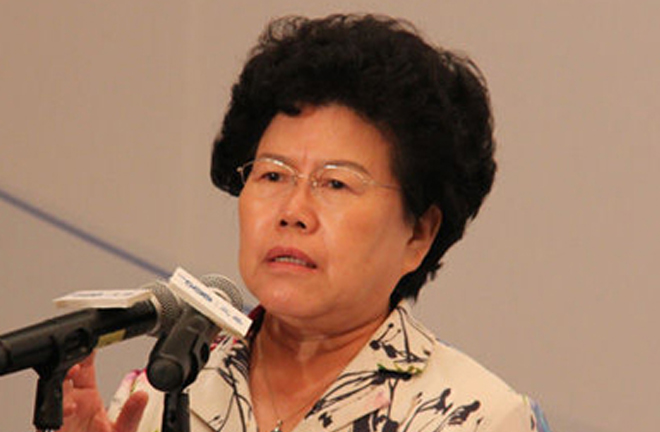CHEN WENLING: New consumption trends reflect growing need for better life
 On a list of the sectors where new growth points and driving forces of economy can be potentially cultivated, the 19th CPC National Congress report ranked mid-range to high-end consumption the first. This is the first time that the goal of boosting mid-range to high-end consumption has officially been put forward in the report. As Chinese people’s growing need for a better life continues to radically motivate the transformation of domestic consumption patterns, some newly emerged patterns of consumption in China will display 10 major trends, progressively becoming the mainstream consumption mode.
On a list of the sectors where new growth points and driving forces of economy can be potentially cultivated, the 19th CPC National Congress report ranked mid-range to high-end consumption the first. This is the first time that the goal of boosting mid-range to high-end consumption has officially been put forward in the report. As Chinese people’s growing need for a better life continues to radically motivate the transformation of domestic consumption patterns, some newly emerged patterns of consumption in China will display 10 major trends, progressively becoming the mainstream consumption mode.
First, online consumption will take on explosive, geometric growth. China invested a total of more than 1.2 trillion yuan in constructing a new generation of information infrastructure that is high speed, mobile, safe and ubiquitous from 2015 to 2017. A huge population of people is now buying through the internet. By accumulating the consumption behaviors, enterprises can find the appropriate value points according to the market demand based on big data analysis.
Second, demand for fashion products will become an explicit factor that fosters the structural change of consumption. According to the survey data of some international organizations, the market volume of China’s luxury goods industry reached 120 billion yuan and Chinese people’s consumption of fashion products accounted for 30 percent of the global market in 2016, making the country the world’s largest consumer of luxury goods.
Third, smart consumption will become the new preference. The rapid development of the internet, internet of things, big data, cloud computing and cloud services in China, as well as other soft infrastructure that has been funded in the past decades provide the basis for smart consumption to thrive today. It is such soft infrastructure that enables mobile payment while mobile payment fosters real-time consumption and settlement.
Fourth, sharing consumption is the new pattern of consumption that creates incremental resources by fully taking advantage of stock resources. As one of the Five Major Development Concepts proposed by Chinese President Xi Jinping, the concept of sharing that guides the sharing economy can generate many new business models and service forms, as well as more employment and business start-up opportunities.
Fifth, experiential consumption is an emerging trend. China’s total inbound and outbound tourists reached 5.1 billion in 2017. In the past, tourism usually took the form of cursory sightseeing, or leisurely scenic spot traveling and resorts. But today it is mostly in the form of experiential consumption, particularly that those culturally distinctive destinations featuring ethnic folk customs or unique ecological resources have become popular for experiential consumption.
The sixth is consumption related to personal appearance. Spending on grooming and improving physical appearance is accounting for an increasing proportion of people’s expenditures. For example, some people go to South Korea to have plastic surgery. Despite the result—either being successful or devastating—there is always demand for these consumptions, the popularity of which has not been reduced. In addition, spending on fitness and sports also falls into this category.
The seventh is consumption on health, which will continue to be the fundamental pattern of consumption that enhances people’s living quality, comfort and sense of happiness. Chinese people have never valued health as much as they do now.
The eighth is cultural consumption, which will become a sustainable way of consumption to enhance people’s intellectual life in the long term. The connotations of cultural consumption are now undergoing profound adjustments. For example, demands for the ancient Chinese language and classical poetry are now considered a form of high-end consumption.
Ninth, consumption on safety has become the most basic and urgent need. For example, people are willing to purchase the most expensive products to ensure food safety. This is how the demand for safety helps create the added value of food. Such consumption will keep growing as people pay more attention to their living quality and safety as their purchasing power rises.
The last is customized consumption, which will arise to meet consumers’ personalized demands. The new consumer groups who pursue fashion, health, leisure and quality are accelerating the development of individualized, diversified and multi-level consumption. Online sales and transactions also boost the emergence of customized business, which, by aggregating individual consumers’ fragmentary demand, offer small-lot, personalized and innovative products.
This article is edited and translated from the Beijing Daily. Chen Wenling is the chief economist of the China Center for International Economic Exchanges.
(edited by BAI LE)
